Cigarette Butt Fashion: From Waste to Sustainable Designer Clothing
Imagine a model walking down the runway in a stunning white gown. It looks like fine lace, but it's actually made from recycled cigarette filters. Instead of letting them pile up, some creative
fashion designers are giving them a new purpose.
By cleaning and processing the filters, they turn this waste into soft, usable material for clothes. It's
fashion meeting sustainability - taking something dirty and transforming it into something beautiful. Each design carries a story of innovation, transforming environmental waste into wearable art that challenges traditional fashion boundaries.
The Evolution of Cigarette Butt Fashion
The concept emerged around 2015 when Chilean designer Alexandra Guerrero pioneered commercial applications. By 2018-2020, design schools worldwide began incorporating waste-to-fashion projects, with India showing increased interest post-2021 as sustainability awareness grew.
The Impact of Cigarette Waste on India's Textile Industry

Despite their size,
cigarette butts represent Earth's most prevalent form of litter, with environmental consequences far exceeding their physical footprint. Every year, people throw away more than 4.5 trillion cigarette butts across the world. Most of them end up on streets, beaches or water bodies instead of bins. Each butt contains a filter made of cellulose acetate, a form of plastic that does not break down easily. It can take more than 10 years to decompose. During this time, it releases harmful chemicals like nicotine, lead and arsenic into the soil and water, poisoning plants, animals and even marine life.
On the other side, the textile and fashion industry adds its own mountain of waste. India alone generates nearly one million tonnes of textile waste every year. Much of this comes from fabric scraps, unsold garments and fast
fashion trends that push consumers to buy and discard clothes quickly. Globally, around 92 million tonnes of textile waste ends up in landfills each year, making fashion one of the most polluting industries after oil. Many of these textiles are synthetic and shed microplastics, which further damage the environment. In India alone, an estimated 120 billion cigarette butts are discarded annually, with major cities like Mumbai, Delhi and Bangalore facing severe littering challenges. The Central Pollution Control Board (CPCB) recognizes cigarette waste as a priority environmental concern.
When designers combine cigarette waste and
textile waste to create fashion pieces, it sends a powerful message. It challenges people to rethink what they throw away and how creativity can turn pollution into purpose. This blend of two major waste streams symbolises both a problem and a solution - reminding us that fashion can clean up its act while inspiring others to see beauty in what was once considered trash.
How Cigarette Butts are Processed for Fashion Use
Through advanced textile recycling technology, designers extract and purify cellulose acetate fibres from discarded cigarette filters, creating innovative
sustainable fabrics.
Understanding Cigarette Filter Composition: The Key to Fashion Recycling
Each filter contains cellulose acetate, a plastic-like fibre that doesn't break down easily. It also holds traces of nicotine and tar, which means it needs careful cleaning before reuse.
The 4-Step Process: From Cigarette Butt to Fashion Fabric
- Collection: Teams collect used cigarette butts from streets and beaches.
- Sterilisation: The waste goes through autoclaves, where hot steam kills germs and removes toxins.
- Solvent Wash: A solvent wash purifies the cellulose acetate and removes odour.
- Fibre Formation: The cleaned material is melted and turned into fine fibres or yarns, ready to be woven into fabric.
How Designers Blend Cigarette Fibres with Organic Materials
To make the fabric soft and durable, designers blend these fibres with organic cotton or jute. Some also use natural dyes to give it a pleasant finish. Challenges in Cigarette Butt Fashion Production
Finding enough filters, keeping the fabric strong and making it look good are big challenges. Still, the effort pays off when waste turns into something fashionable. While conventional cotton fabric costs approximately Rs. 200 - 400 per meter, recycled cigarette butt fabric currently costs Rs. 800-1200 per meter due to intensive processing requirements, making it primarily viable for limited-edition collections and art installations. Why Cigarette Butt Fashion is Revolutionary for Sustainability
Like ocean plastic garments by Marina DeBris, this idea turns pollution into style. The transformation of cigarette butts proves how creativity can help clean the planet-one outfit at a time.Key Designers & Projects Leading the Trend
Across the
world, a few creative minds are proving that even cigarette butts can be turned into something beautiful. These designers are blending art, fashion and activism to give new meaning to waste.
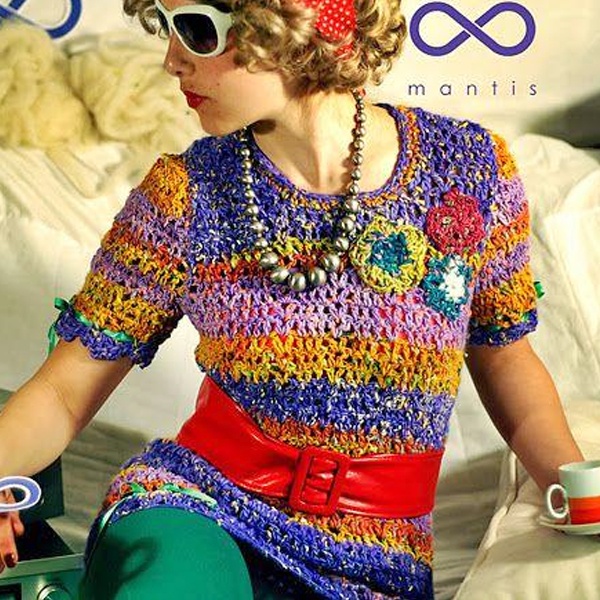
Alexandra Guerrero and Mantis Mantis
Chilean designer Alexandra Guerrero leads this movement with her brand Mantis Mantis. She collects used cigarette filters, cleans and disinfects them, then mixes the fibres with natural materials like cotton or
wool to make a soft, wearable fabric. Her designs aren't made for the mass market - they're shown in art spaces and concept shows that highlight sustainability and creativity. Each Mantis Mantis piece demonstrates how innovative design can address environmental challenges while creating aesthetically compelling fashion.
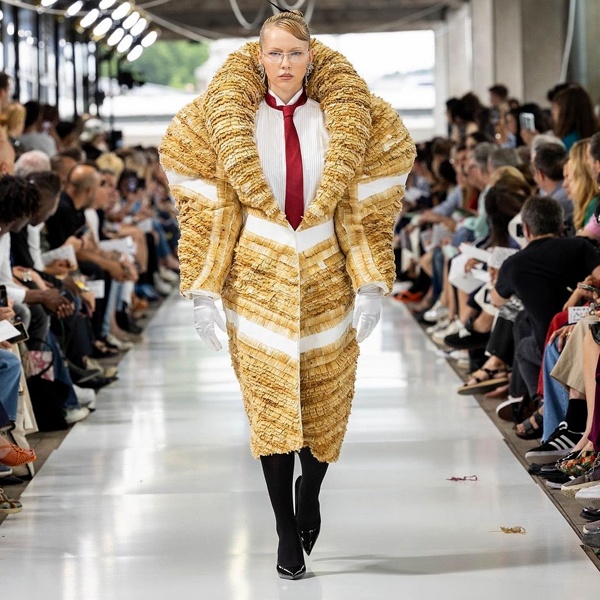
Jiawei Han's Cigarette Coat
Chinese designer Jiawei Han created a striking coat made entirely from cigarette butts. He developed a method to transform the discarded filters into a smooth, clean fabric that looked surprisingly high-end. The coat stood out not just for its craftsmanship, but for its message-showing that fashion and environmental awareness can walk hand in hand.
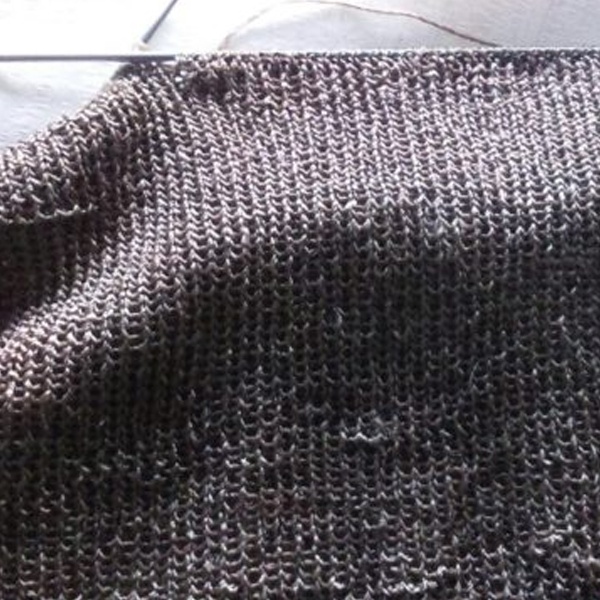
Young Designers: Central Saint Martins Students Pioneer Cigarette Butt Fashion
This idea is also inspiring young designers. A student from Central Saint Martins, featured in i-D, made a graduation collection using cigarette-butt fabric. The project aimed to spark conversations about pollution and material innovation, showing how the next generation sees fashion as a platform for change.

Cigarette Butt Fashion on Runways: Where Art Meets Environmental Activism
These creations aren't meant for everyday wear. They appear on runways, in editorials and at exhibitions that mix style with activism. Together, they show how designers can turn waste into art and make fashion a voice for a cleaner world. Actress
Urfi Javed also showcases a costume made from cigarette butts.
Indian Innovators in Sustainable Fashion
While international designers lead this movement, Indian
fashion institutes and sustainability startups are beginning to explore cigarette waste recycling. Students from NIFT and NID have experimented with small-scale prototypes, demonstrating India's growing interest in circular fashion economy.
Technical Guide: Working with Cigarette Butt Textiles
Working with cigarette butts as a textile material may sound unusual, but it demands solid technical understanding and creative vision. For fashion students and practitioners, the process involves transforming discarded filters into fibres that are safe, wearable and visually appealing.
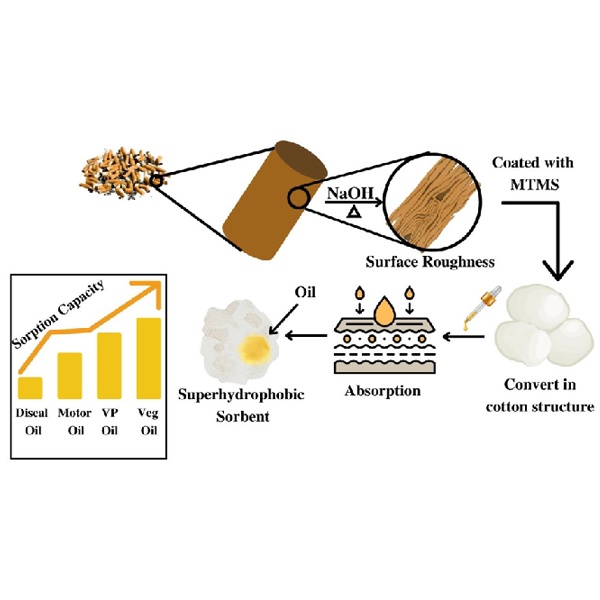
- Structural Design - When fibres are extracted and processed from cigarette filters, their texture and strength differ from standard cotton or polyester. Weaving gives a denser, stiffer surface that works well for structured silhouettes like jackets or panels. Knitting, on the other hand, provides better stretch and flexibility, making it suitable for trims or soft accessories. The drape often depends on how finely the fibres are cleaned and blended-finer fibres produce smoother, more fluid fabrics.
- Colour Palette - Filters have a natural beige or off-white tone caused by nicotine residue. Some designers choose to preserve this hue to highlight the raw, recycled origin of the fabric. Others dye the cleaned fibres using natural or synthetic dyes to create brighter, market-ready textiles. The contrast between natural tones and coloured fabrics opens up rich aesthetic opportunities, from earthy streetwear to high-fashion statements.
- Hybridisation for Wearability - Upcycled filter fibres can be mixed with conventional materials such as cotton, silk or recycled polyester. This blend improves breathability, comfort and strength while maintaining the sustainable character of the fabric. Hybridisation also allows smoother finishes, making the final garment practical for daily wear without losing its creative edge.
- Ethical and Safety Checklist - Before using cigarette-derived material, students must confirm that it is completely detoxified. All harmful chemicals and odours must be removed through professional cleaning and sterilisation. The material should meet basic manufacturing and safety standards so it does not irritate the skin. Designers must also maintain transparency-wearers should know the origin of the fabric and the steps taken to make it safe.
- Studio Project Idea - A good classroom activity could involve a mini-project where students collect discarded cigarette butts from a safe source, clean them under supervision and create small prototypes such as fabric swatches, accessories or trims. This hands-on process helps them understand fibre behaviour, surface texture and design challenges while promoting environmental responsibility.
- Documentation and Reflection - Every stage-from waste collection to final prototype-should be recorded through sketches, notes and photos. Students can log material weight, texture changes and cleaning methods. Reflecting on this journey helps them understand how waste can evolve into meaningful design material and builds accountability for future sustainable projects.
- Safety Certifications and Standards - Properly processed cigarette butt textiles should meet OEKO-TEX Standard 100 or equivalent certifications to ensure no harmful residues remain. In India, materials must comply with Bureau of Indian Standards (BIS) textile safety norms before commercial use.
Caring for Cigarette Butt Fashion Garments
- Dry clean only or gentle hand wash with mild detergent.
- Avoid harsh chemicals and bleach.
- Air dry away from direct sunlight
- Store in breathable fabric bags
- Handle blended fabrics according to their dominant fibre content
Sustainability & Ethics of Cigarette Butt Fashion
Converting cigarette butts into textile material addresses a critical environmental challenge while advancing sustainable
fashion innovation. Every year, tons of cigarette filters end up in landfills and waterways. When designers collect and clean them to make clothes or accessories, that waste gets a second life. It's not just recycling - it's changing how we see waste and value in fashion. A single garment using recycled cigarette butts can divert 2,000 - 5,000 filters from entering waterways, potentially preventing up to 10 kgs of microplastic pollution over the material's lifespan.
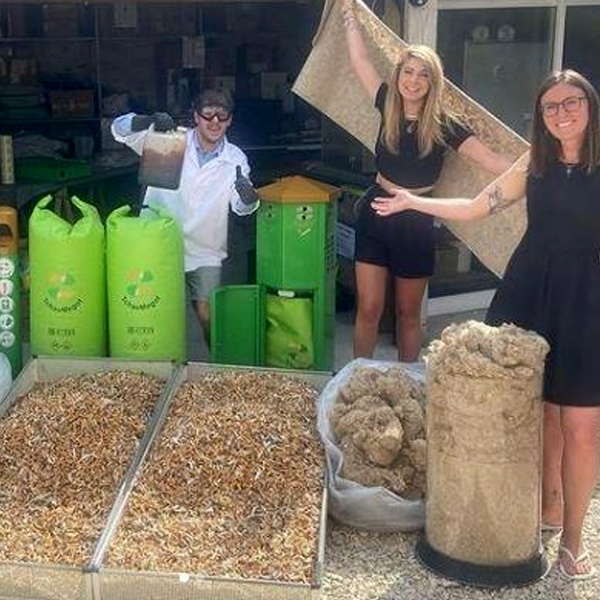
- Reducing Cigarette Waste Through Fashion - By transforming cigarette butts into wearable material, designers help reduce pollution and start important conversations about sustainable fashion. Each garment serves as tangible evidence that innovative design can divert thousands of toxic filters from landfills and waterways.
- Scalability Challenges in Cigarette Butt Fashion Production - While the idea is inspiring, scaling it up responsibly is tricky. Collecting and processing cigarette waste takes time, money and safe handling. Some also question whether turning waste into high-end fashion encourages more buying in the name of sustainability. Real change comes from reducing waste first, not just repackaging it.
- Worker Safety in Cigarette Waste Recycling - Every stage - from collecting to cleaning and making - needs ethical care. Workers must stay safe and the chemicals used for sterilising filters should not harm the environment. Transparency matters as much as innovation.
- Consumer Response to Cigarette Butt Fashion - Consumer response varies from enthusiastic adoption by sustainability advocates to legitimate concerns about hygiene and environmental authenticity, highlighting the importance of transparent production processes. What matters is honesty - people respect brands that share the real process behind their designs.
- How Cigarette Butt Fashion Fits Global Sustainability Trends - This concept fits well with the circular economy and zero-waste design, where waste becomes a raw material again. It's also a great example of material innovation, proving fashion can be creative and responsible at the same time.
Future Outlook: Where This Trend Could Go
The idea of transforming cigarette butts into creative costumes is still young, but it shows real promise. With new research and creative thinking, this movement could grow far beyond a few experimental collections.
- Smarter Materials on the Horizon - Scientists are now exploring how cellulose acetate - the main material in cigarette filters - can become a strong, flexible fibre. Once purified, it can be spun into textiles that look and feel similar to synthetic fabrics. Over time, these materials may improve in quality, making them softer, safer and suitable for everyday fashion. As material science advances, cigarette waste could become a valuable raw material rather than a pollutant.
- Collaborations that Drive Change - The next step for designers lies in teamwork. By partnering with waste management companies and NGOs, designers can create reliable systems to collect and clean used filters. Design schools can also join the effort by encouraging students to experiment with recycled fibres and build awareness around sustainable fashion. Together, they can form a circular chain where waste finds new life in art and clothing.
- Real Challenges to Overcome - This concept faces a few hurdles. The process of cleaning cigarette filters can be expensive and time-consuming. Since filters may contain toxic substances, government rules could limit their use in clothing. Durability and comfort also remain questions, as treated filters may not match the strength of traditional fabrics yet. These are practical issues that need continuous testing and transparent safety checks.
- Advice for Emerging Designers - Students and young designers should start small. Work with local waste collectors, document each stage and explain the story behind your creation. Focus on wearable pieces that show creativity and awareness. As you gain experience, explore how to scale up responsibly without losing the ethical and environmental message behind your work.
- Turning the Concept into a Marketable Idea - To make this idea commercially viable, designers can release limited-edition collections or create statement art pieces. Collaborations with eco-fashion labels or art exhibitions can attract attention from conscious consumers. Custom installations or recycled fabric displays can also help build a strong narrative around sustainability.
- Where to Experience Cigarette Butt Fashion in India - Currently, these designs appear primarily at sustainable fashion exhibitions, design school showcases (NIFT, NID, Waves Institute of Fashion Designing) and select eco-fashion pop-ups in metro cities. Limited-edition pieces occasionally appear on sustainable fashion platforms like Brown Living and The Second Stitch.
Beautiful Costumes created using Cigarette Butts
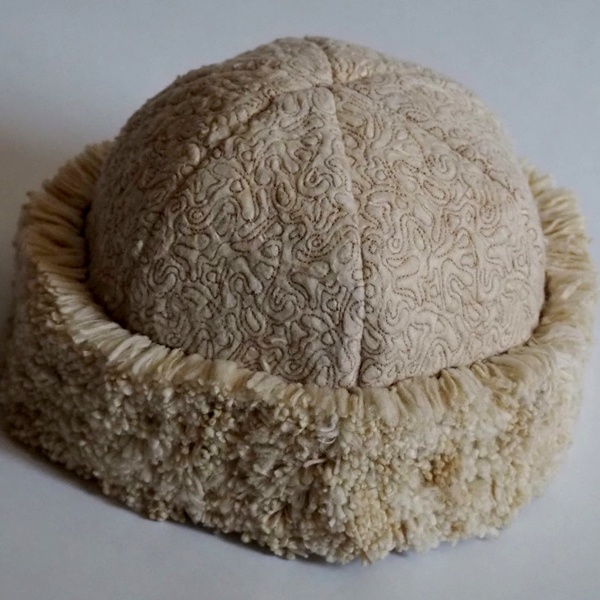
Fuzzy Hat
Designer Olivia Gino creates unique fuzzy hat fashion accessory from waste cigarette butts showcasing creative sustainable design
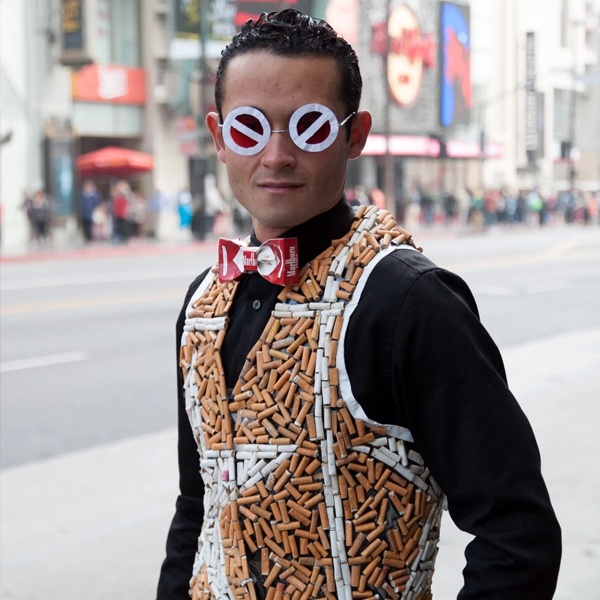
Vest from Cigarettes
Eco-artist creates artistic
vest garment from hundreds of discarded cigarettes collected in Hollywood demonstrating waste-to-fashion art

Process Yarns
Sustainable clothing garments made from processed yarns derived from recycled cigarette butt fibers showing textile innovation
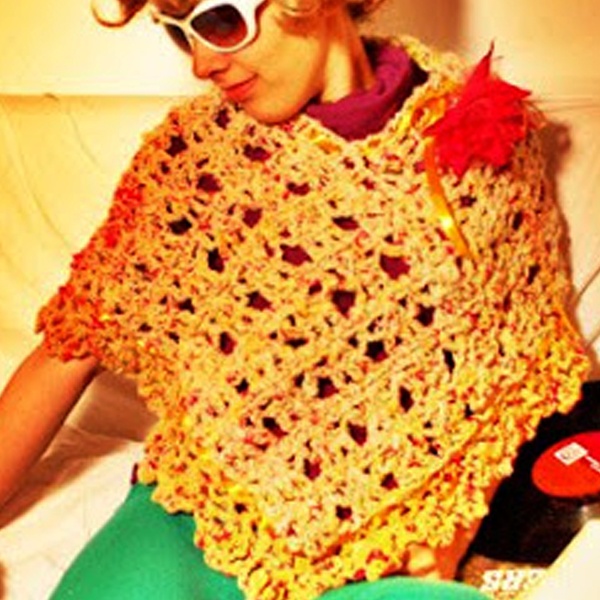
Alexandra's Stylish Clothing
Chilean fashion designer Alexandra Guerrero modeling stylish
eco-friendly clothing created from discarded recycled cigarette materials
This transformation from environmental pollutant to fashion statement exemplifies how innovative design thinking can reimagine waste streams as valuable resources. That's the real strength of fashion - to transform and to inspire new ways of thinking. For emerging designers, this movement demonstrates that sustainable innovation requires both technical knowledge and creative vision. Materials once considered waste can become the foundation for meaningful design when approached with curiosity and purpose.
Try this - pick something unexpected around you and design a small piece from it. It could be a simple accessory or a fabric sample. The aim is to experiment and see what happens. If cigarette butts can become fashion, think of what else can be reborn. Every small act of reuse brings us closer to a cleaner and more creative world.
FAQ about Cigarette Butt Fashion
1. Is it even legal to use cigarette butts in fashion projects?
Yes, it's allowed - but only if the waste is properly cleaned and handled. You must follow pollution control and safety rules set by local authorities.
2. Are clothes made from cigarette filters safe and hygienic to wear
Yes, when properly processed. After rigorous sterilization including autoclave treatment and chemical purification, all harmful substances are removed. The resulting fabric meets textile safety standards and poses no health risks. The material becomes completely clean and safe for direct skin contact.
3. Where do designers get used cigarette butts from?
Some recycling companies and NGO's in India collect and process cigarette waste. It's safer to collaborate with them instead of picking it up yourself.
4. What is inside a cigarette filter that makes it usable for fabric?
The filter is made from cellulose acetate, which is a kind of plastic. Once cleaned, it can be turned into soft, durable fibres.
5. Can these fibres be mixed with other materials?
Yes, they're usually blended with cotton, silk or jute to make the fabric softer and more breathable.
6. How much waste does it take to make a piece of clothing?
A lot! Thousands of filters might be needed to make just one small garment. That's why most designers start with smaller accessories.
7. Do Indian rules support this kind of recycling?
The Central Pollution Control Board encourages safe recycling of cigarette waste, but you must prove that the material is non-toxic and properly treated.
8. Will people actually buy such clothes?
Some will! Many eco-conscious buyers love unique, sustainable fashion. But transparency is key - brands must explain the cleaning and recycling process clearly.
9. How can design students try this idea safely?
Work with a recycler, wear gloves when handling samples and never use raw waste. Small-scale projects are a good way to explore the concept safely.
10. What's the
business potential and future of cigarette butt fashion in India?
The concept shows promise but faces challenges. Currently, high processing costs limit viability to limited-edition designs and art shows. However, as more designers embrace sustainability and processing technology improves, this could evolve into a niche market segment. Success depends on scaling collection systems, reducing costs and building consumer trust through transparency.
11. Do these fabrics look or feel different?
When blended with
natural fibres like cotton or silk, cigarette butt fabric closely resembles conventional textiles, though it may exhibit slightly higher stiffness depending on processing methods.
12. What happens to the leftover waste from this process?
Any leftover residue is disposed of safely or reused in other recycled materials, depending on the process.
13. Are there better eco-friendly materials to try instead?
Of course. You can explore fibres made from banana, bamboo, pineapple leaves or recycled plastic bottles - all great sustainable options.
14. How should brands describe this material to customers?
Be honest and simple. Mention that it's made from cleaned and recycled cigarette filters and highlight the safety and sustainability aspect.
15. Do these projects help reduce pollution in India?
Yes, even small projects help keep toxic waste out of landfills and water bodies. It's a creative step towards cleaner cities.
16. Can this be included in college design assignments?
Definitely! Many fashion institutes use such projects to teach students about sustainable design and material innovation.

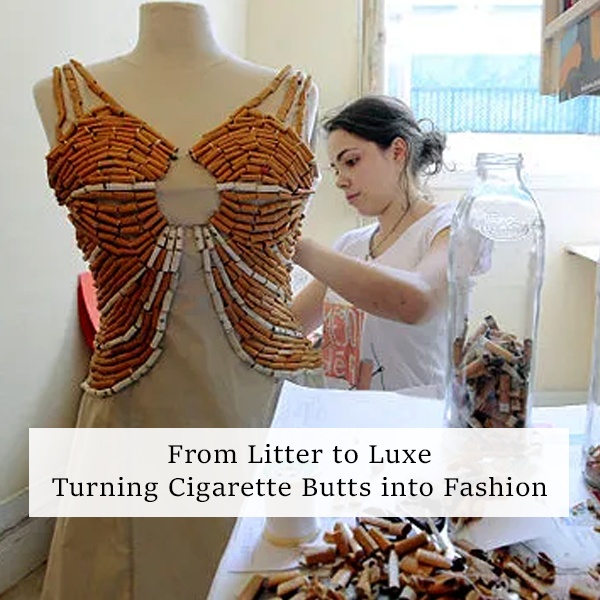

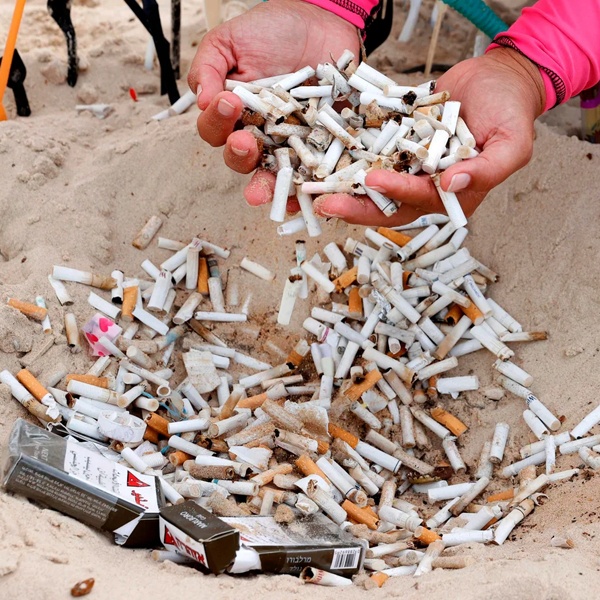
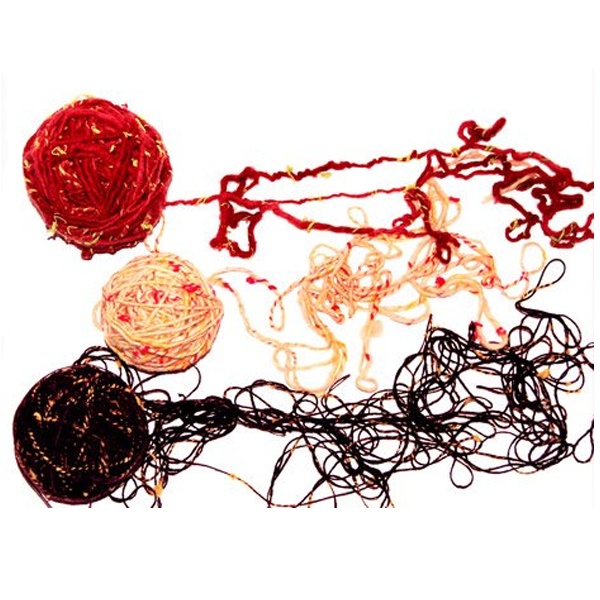










 CONTACT USWaves Institute of Fashion Designing,
CONTACT USWaves Institute of Fashion Designing,